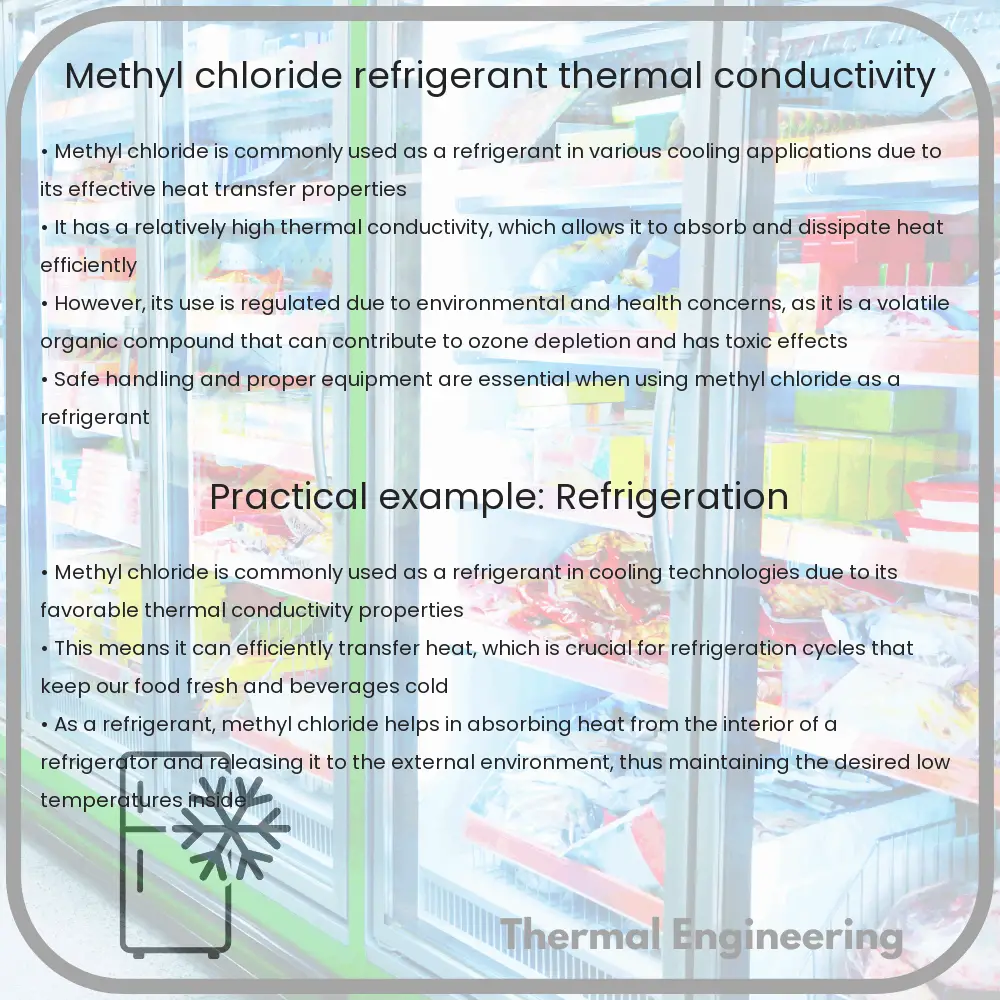Learn about methyl chloride (CH3Cl), its use as a refrigerant, and its thermal conductivity in refrigeration applications.

Understanding Methyl Chloride as a Refrigerant
Methyl chloride, also known as chloromethane and by its chemical formula CH3Cl, plays a significant role in the field of refrigeration engineering. This chemical compound, categorized under Halomethanes, was one of the first chemicals to be used as a refrigerant. With a boiling point of -23.8 degrees Celsius, methyl chloride is suitable for medium-temperature refrigeration applications.
Properties and Applications
As a refrigerant, methyl chloride offers several characteristics that make it useful, especially in specific applications that require temperatures that are not extremely low. It is most noteworthy for its thermal conductivity, an essential property in the efficiency of refrigeration cycles. Thermal conductivity refers to a material’s ability to conduct heat, and in the case of methyl chloride, it typically ranges within acceptable limits for effective heat exchange processes.
The physical properties of methyl chloride allow it to be used in:
- Home appliance refrigeration systems designed for medium temperature ranges.
- Industrial refrigeration where moderate cooling is sufficient.
- Specialized applications such as in the production of silicones in sealants, adhesives, and molds.
Thermal Conductivity of Methyl Chloride
Thermal conductivity is a crucial factor in the effectiveness of a refrigerant. It influences how quickly and efficiently heat can be absorbed and expelled during the refrigeration cycle. The thermal conductivity of methyl chloride is approximately 0.0096 W/m*K, a measure that makes it competitive with other refrigerants typically used in similar applications.
Accurate knowledge of the thermal conductivity helps engineers design more efficient refrigeration systems by optimizing the size and structure of components like heat exchangers and evaporators, which directly impact the system’s overall energy efficiency.
Environmental and Safety Considerations
While methyl chloride was widely used in the past, its application has decreased due to environmental and health concerns. Methyl chloride contributes to ozone layer depletion and possesses high global warming potential (GWP). It is also flammable and toxic, necessitating careful handling and strict adherence to safety protocols to prevent accidental release and exposure.
Today, the use of methyl chloride as a refrigerant is heavily regulated, and it has been largely replaced by more environmentally friendly alternatives in many countries. However, it is still used in certain industrial applications due to its specific properties and effectiveness.
Conclusion
Methyl chloride’s role in refrigeration showcases the importance of chemical engineering in developing and managing technologies that impact our everyday lives. While it offers beneficial properties as a refrigerant, the shift towards more sustainable solutions illustrates the ongoing evolution within the field of refrigeration engineering. Understanding the properties, applications, and implications of materials like methyl chloride is essential for developing safer and more environmentally friendly refrigeration technologies.
As the field continues to advance, the exploration of alternatives and enhancements in refrigeration technology remains a critical area of study and professional practice in engineering.